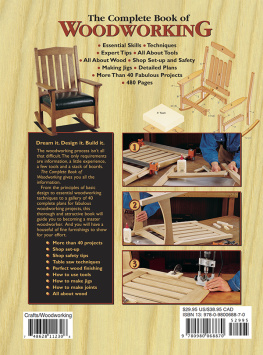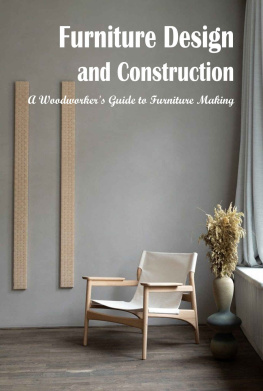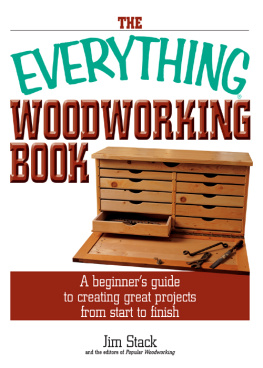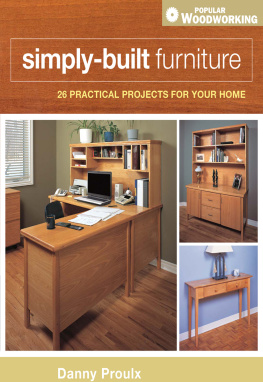the
ESSENTIAL
PINE
BOOK
JOHN MCGUANE &
MEGAN FITZPATRICK

The Essential Pine Book. Copyright 2004 by John McGuane and Megan Fitzpatrick. Printed and bound in China. All rights reserved. No part of this book may be reproduced in any form or by any electronic or mechanical means, including information storage and retrieval systems, without permission in writing from the publisher, except by a reviewer, who may quote brief passages in a review. Published by Popular Woodworking Books, an imprint of F+W Publications, Inc., 4700 East Galbraith Road, Cincinnati, Ohio, 45236. First edition.
Visit our Web site at www.popularwoodworking.com for information on more resources for woodworkers.
Other fine Popular Woodworking Books are available from your local bookstore or direct from the publisher.
10 09 08 07 06 6 5 4 3 2
Library of Congress Cataloging-in-Publication Data
McGuane, John, 1953
The essential pine book / by John McGuane and Megan Fitzpatrick.
p. cm.
Includes index.
ISBN 13: 978-1-55870-711-5 (pbk.: alk. paper)
eISBN 13: 978-1-4403-1618-0
ISBN 10: 1-55870-711-5 (pbk.: alk. paper)
1.Woodwork. 2. Pine. I. Fitzpatrick, Megan, 1968- II. Title.
TT180.M375 2004 2004046090
684'.08dc22
ACQUISITIONS EDITOR: Jim Stack
EDITED BY: Amy Hattersley
DESIGNED BY: Brian Roeth
TECHNICAL ILLUSTRATIONS BY: Jim Stack

LAYOUT ARTIST: Joni DeLuca
PRODUCTION COORDINATED BY: Robin Richie
FINISHED PROJECTS AND COVER PHOTOGRAPHY: Christine Polomsky
STYLIST: Nora Martini
METRIC CONVERSION CHART
to convert | to | multiply by |
Inches | Centimeters | 2.54 |
Centimeters | Inches | 0.4 |
Feet | Centimeters | 30.5 |
Centimeters | Feet | 0.03 |
Yards | Meters | 0.9 |
Meters | Yards | 1.1 |
Sq. Inches | Sq. Centimeters | 6.45 |
Sq. Centimeters | Sq. Inches | 0.16 |
Sq. Feet | Sq. Meters | 0.09 |
Sq. Meters | Sq. Feet | 10.8 |
Sq. Yards | Sq. Meters | 0.8 |
Sq. Meters | Sq. Yards | 1.2 |
Pounds | Kilograms | 0.45 |
Kilograms | Pounds | 2.2 |
Ounces | Grams | 28.4 |
Grams | Ounces | 0.035 |
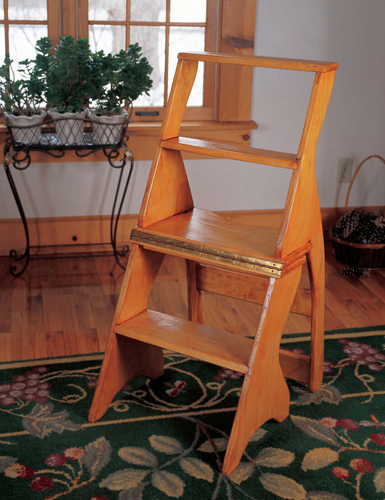
READ THIS IMPORTANT SAFETY NOTICE
To prevent accidents, keep safety in mind while you work. Use the safety guards installed on power equipment; they are for your protection. When working on power equipment, keep fingers away from saw blades, wear safety goggles to prevent injuries from flying wood chips and sawdust, wear headphones to protect your hearing and consider installing a dust vacuum to reduce the amount of airborne sawdust in your woodshop. Don't wear loose clothing, such as neckties or shirts with loose sleeves, or jewelry, such as rings, necklaces or bracelets, when working on power equipment. Tie back long hair to prevent it from getting caught in your equipment. People who are sensitive to certain chemicals should check the chemical content of any product before using it. The authors and editors who compiled this book have tried to make the contents as accurate and correct as possible. Plans, illustrations, photographs and text have been carefully checked. All instructions, plans and projects should be carefully read, studied and understood before beginning construction. In some photos, power tool guards have been removed to more clearly show the operation being demonstrated. Always use all safety guards and attachments that come with your power tools. Due to the variability of local conditions, construction materials, skill levels, etc., neither the author nor Popular Woodworking Books assumes any responsibility for any accidents, injuries, damages or other losses resulting from the material presented in this book. Prices listed for supplies and equipment were current at the time of publication and are subject to change. Glass shelving should have all edges polished and must be tempered. Untempered glass shelves may shatter and can cause serious bodily injury. Tempered shelves are very strong and if they break will just crumble, minimizing personal injury.
ABOUT THE AUTHORS

JOHN DOUGLAS MCGUANE has been a woodworker since 1971, but took to it with a vengeance after he and his wife, Jean, bought a Victorian home in need of renovation. First, he built a two-story shop on top of his home's garage, then promptly went about installing hardwood floors and base and crown moulding in every room in the house and furnishing it with his own pieces. He's also designed and built custom cabinets for the kitchen, among numerous other woodworking and construction projects. John is especially adept at designing pieces to make the most of those quirky spaces that abound in late-19th-century homes.

MEGAN FITZPATRICK is a freelance researcher and writer who now knows more about pine than she ever thought possible or desirable. Megan is especially adept at talking herself and her neighbor John into getting involved in projects that end up taking much more time and effort than expected.
ACKNOWLEDGEMENTS
JOHN | First, I want to thank all the people I have encountered throughout my life who have shared their knowledge and experience with me. These master craftsmen are too numerous to mention, but they provided invaluable information and encouragement.
I would be remiss if I did not acknowledge my coauthor, Megan Fitzpatrick, who gave me the opportunity to participate in this project and provided the support necessary for a first-time author.
Jim Stack, a master craftsman, took the time and had the patience to help me through the learning curve. Without the support and encouragement of Megan and Jim, I would not have been able to execute my ideas and concepts.
But most of all, I am truly thankful for an opportunity to recognize my wife, Jean, my friend and one of my greatest influences. It was her encouragement to travel and view other cultures that allowed me to absorb the various styles of woodworking and craftsmanship that have influenced my life and work. Thanks to all!
MEGAN | Many thanks to Jim Stack for his kind and patient tutelage, to John and Jean McGuane for allowing me to take up all of John's free time for months, and to my grandfather, C. Emmett Fitzpatrick, whose woodworking talent has fascinated me since I was in pigtails.





